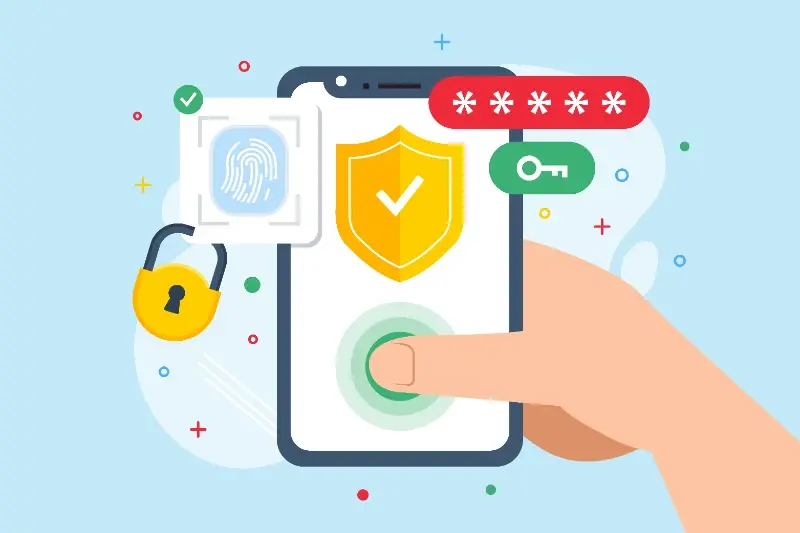From Chaos to Control: Organising Your App Development With Version Control
Studies show that 67% of mobile app development projects fail to meet their original deadlines, and poor code management is one of the biggest culprits. I've been working with development teams for years now, and the number of times I've seen brilliant mobile app ideas derail because nobody could keep track of what code changes were made when—well, let's just say it happens more often than anyone wants to admit.
If you've ever worked on a mobile app project with more than one developer, you'll know the feeling. Someone makes a change that breaks the login feature. Another team member accidentally overwrites three days' worth of work. The designer updates the interface but nobody knows which version of the code matches the new design. Before you know it, your project timeline has gone out the window and your budget is following close behind.
Version control isn't just about backing up your code—it's about maintaining your sanity and keeping your project on track.
The thing is, version control doesn't have to be complicated. Yes, it might seem like yet another thing to learn when you're already juggling mobile app development, project management, and everything else that comes with building an app. But once you get the basics sorted, it becomes second nature. Think of it as the safety net that catches you when things go wrong—and in app development, things will go wrong. The teams that succeed aren't the ones that never make mistakes; they're the ones that can recover from mistakes quickly and keep moving forward.
What Is Version Control And Why Does It Matter
Version control is basically a system that keeps track of all the changes made to your app's code over time. Think of it like having a detailed diary for your project—every time someone adds a new feature, fixes a bug, or changes something, version control records exactly what happened and when. It's software that runs alongside your development process, quietly documenting every modification so you can see the complete history of your app.
Now, you might be wondering why this matters for your mobile app project. Well, the truth is, without version control, development becomes incredibly risky. When multiple developers work on the same codebase (and let's face it, most worthwhile apps need more than one person), things can go wrong fast. Someone might accidentally delete important code, or two developers might work on the same feature and overwrite each other's changes.
Key Benefits That Actually Matter
Here's what version control gives you that makes it absolutely worth setting up from day one:
- Complete backup of every version of your code
- Ability to see exactly who changed what and when
- Option to roll back to previous working versions if something breaks
- Safe way for multiple developers to work together without conflicts
- Clear record of how your app evolved over time
The bottom line is this: version control transforms chaotic development into organised, trackable progress. Without it, you're essentially building your app on quicksand—one wrong move and everything can collapse. With proper version control in place, you have a solid foundation that lets your team work confidently, knowing that every change is recorded and reversible if needed.
The Real Cost Of Poor Version Control
Let me tell you what happens when mobile app development teams don't use proper version control—it gets messy fast. I've seen projects where developers are emailing code files back and forth, or worse, using shared folders where everyone dumps their changes without any tracking. The result? Complete chaos that costs time, money, and sanity.
When you don't have version control in place, you lose code. Simple as that. Someone accidentally deletes a file or overwrites hours of work, and suddenly you're back to square one. I've watched teams lose entire features because they couldn't roll back to a working version when something went wrong. That's billable hours down the drain and stressed developers trying to recreate work they've already done.
The Domino Effect on Project Management
Poor version control doesn't just affect your code—it destroys your project management too. You can't track what's been done, who did it, or when changes were made. This makes it impossible to give accurate updates to clients or estimate how long tasks will take. Your mobile app project timeline becomes a guessing game.
Track every single code change, no matter how small. Even a one-line fix can break something else if you can't see what changed and when.
The financial impact hits hard too. Projects run over budget when teams spend days debugging issues that could have been solved in minutes with proper version history. Clients lose trust when you can't explain why features suddenly stopped working or why the app crashed after an update. This reputation damage costs far more than setting up version control properly from day one.
Setting Up Your First Version Control System
Right, let's get your hands dirty and actually set up version control for your mobile app project. I know it might feel like extra work when you're eager to start coding, but trust me—you'll thank yourself later when you're not frantically searching through folders trying to find that working version from last Tuesday.
The most popular choice for mobile development teams is Git, and for good reason. It's free, works brilliantly with both iOS and Android projects, and integrates seamlessly with platforms like GitHub, GitLab, or Bitbucket. Don't worry if those names sound intimidating; they're just places where your code lives safely in the cloud.
Getting Started With Git
Setting up Git is surprisingly straightforward. You'll need to install it on your computer first—there are simple installers available for Mac, Windows, and Linux. Once installed, you can create your first repository (that's just a fancy word for your project folder) using your terminal or command prompt.
Here's what you need to do to get your project under version control:
- Install Git on your development machine
- Create a new repository for your app project
- Add your existing project files to the repository
- Make your first commit with a message like "Initial project setup"
- Connect to a remote repository on GitHub or similar platform
- Push your code to the cloud for safekeeping
The whole process takes about fifteen minutes, and that's including the time to make a cup of tea whilst things download. Modern development environments like Xcode and Android Studio have built-in Git support too, so you won't need to memorise command line instructions if that's not your thing.
Managing Code Changes Across Your Development Team
When you've got multiple developers working on the same mobile app, things can get messy fast. One person changes a function, another updates the same file, and suddenly your app won't compile. Sound familiar? This is where proper code change management becomes your best friend.
The key is establishing clear rules about how your team handles changes. Start with commit messages—those little notes developers write when they save their work. Make them descriptive. Instead of "fixed stuff", write "fixed login button crash on Android devices". Your future self will thank you when you're trying to track down a bug months later.
Creating a Review Process That Works
Code reviews aren't just about catching bugs; they're about keeping your entire team in sync. Before any code gets merged into your main project, have another developer look at it. This catches problems early and helps spread knowledge across your team.
Version control isn't just about backing up code—it's about enabling collaboration without chaos
Set up automated checks too. These can run tests every time someone submits changes, catching issues before they reach your main codebase. Most version control systems can trigger these automatically, saving you hours of debugging later. Remember, the goal isn't to slow development down—it's to keep your mobile app stable whilst your team moves quickly. When everyone follows the same process, you'll spend less time fixing conflicts and more time building features that matter.
Branching Strategies That Actually Work
Right, let's talk about branching strategies—because honestly, this is where most teams either find their rhythm or completely lose their minds. After working with development teams of all sizes, I can tell you that there's no one-size-fits-all approach, but there are definitely patterns that work better than others.
The simplest approach is the feature branch strategy. Every new feature gets its own branch, you work on it separately, then merge it back when it's ready. Clean, straightforward, and perfect for smaller teams. You create a branch called "user-login-feature" or "payment-integration", do your work, test it, and merge it back to the main branch when everything's working properly.
Git Flow vs GitHub Flow
Git Flow is the more structured approach—you've got your main branch, a develop branch, feature branches, and release branches. It sounds complicated, but it gives you serious control over what goes where and when. GitHub Flow is much simpler: main branch, feature branches, that's it. Deploy straight from main when you're ready.
For mobile app development, I usually recommend GitHub Flow for teams under five people and Git Flow for larger teams or apps with complex release cycles. The key thing is picking one approach and sticking to it; switching between strategies mid-project is like changing the rules halfway through a football match.
Keep Your Branches Short-Lived
Here's something that'll save you headaches: keep your feature branches alive for days, not weeks. The longer they live, the messier your merges become. Small, frequent changes beat massive, infrequent ones every single time.
Handling Conflicts When Multiple Developers Edit The Same Code
When you've got multiple developers working on your mobile app, conflicts are going to happen—it's just part of the process. Two developers might change the same bit of code at the same time, and your version control system will need to figure out which changes to keep. Don't panic though; these conflicts are completely normal and there are straightforward ways to handle them.
Most version control systems will spot conflicts automatically when developers try to merge their changes. The system will mark the conflicting sections and show you exactly where the problem is. Think of it like having two people edit the same document; someone needs to decide which version is correct.
Common Types of Code Conflicts
Understanding what causes conflicts can help your team avoid them in the first place:
- Two developers modify the same line of code
- One person deletes a file whilst another edits it
- Changes to shared components or libraries
- Formatting differences between different code editors
The key to managing conflicts is having a clear process. When a conflict appears, the developer should carefully review both versions of the code, understand what each change does, and then decide how to combine them properly. Sometimes you'll keep one version, sometimes you'll merge both changes together.
Set up your team with good communication tools—a quick chat can often prevent conflicts before they happen. If you know someone else is working on the same area of code, coordinate your changes.
Prevention is always better than cure. Regular code reviews, clear task assignments, and frequent commits all help reduce the number of conflicts your team will face during mobile app development.
Integrating Version Control With Your Project Management Workflow
Your version control system shouldn't exist in isolation—it needs to work hand-in-hand with how you manage your entire project. I've seen too many development teams treat version control as a separate tool that developers use whilst project managers work in completely different systems. This creates gaps where important information gets lost.
The key is connecting your version control commits to specific tasks, features, or bug reports in your project management system. When a developer makes a commit, they should reference the task number or feature ID in their commit message. This creates a clear trail from the business requirement right through to the actual code changes.
Setting Up Automated Connections
Most modern project management tools can integrate directly with your version control system. These integrations automatically update task statuses when code gets committed, merged, or deployed. Your project manager can see exactly what's been completed without constantly asking developers for updates.
Here are the most valuable integrations to set up:
- Automatic task status updates when branches are created or merged
- Commit messages appearing as comments on related tasks
- Deployment notifications sent to stakeholders when features go live
- Code review requests triggering notifications to the right team members
Creating Clear Release Planning
Version control branches should align with your project milestones and release schedule. When you're planning Sprint 3 or Release 2.1, you should know exactly which branches contain the features you need. This makes it much easier to decide what's ready to ship and what needs more work.
The result? Your whole team stays informed, nothing slips through the cracks, and you can actually track progress in real-time rather than waiting for weekly status meetings.
Conclusion
Getting your mobile app development under control doesn't happen overnight, but version control is absolutely the foundation you need to build on. I've seen too many projects fall apart because teams tried to skip this step or thought they could manage without proper systems in place—it never ends well.
The truth is, version control isn't just about keeping your code organised (though that's brilliant too). It's about giving your entire team the confidence to experiment, make changes, and push boundaries without fear of breaking everything. When developers know they can always roll back to a working version, they're more likely to try innovative solutions and take calculated risks that can make your app stand out.
Your project management workflow will transform once version control becomes second nature to your team. No more frantic messages asking "who changed what?"—no more lost work because someone's laptop decided to give up the ghost. Every change is tracked, every decision is documented, and every team member can see exactly what's happening across the project.
The branching strategies and conflict resolution processes we've covered might seem complex at first, but they become natural habits with practice. Start simple, be consistent, and don't try to implement everything at once. Your future self (and your stressed project manager) will thank you when deadlines are approaching and everything is running smoothly instead of descending into chaos.
Version control transforms mobile app development from a nerve-wracking juggling act into a structured, predictable process that scales beautifully as your team grows.
Share this
Subscribe To Our Blog
You May Also Like
These Related Stories

How Version Control Can Save Your App (and Your Sanity)

App Version Control for Beginners: Why Every Developer Needs a Safety Net





